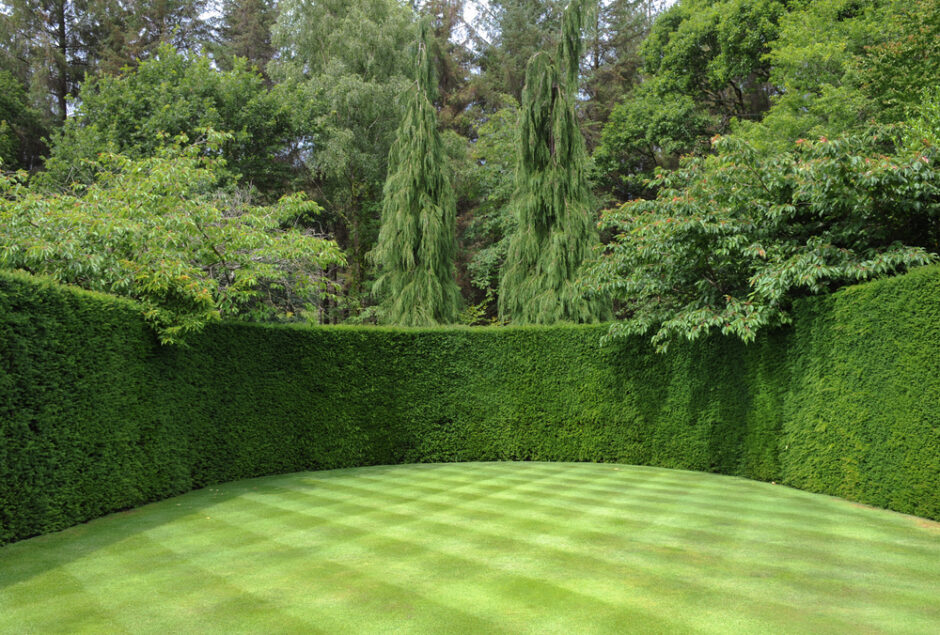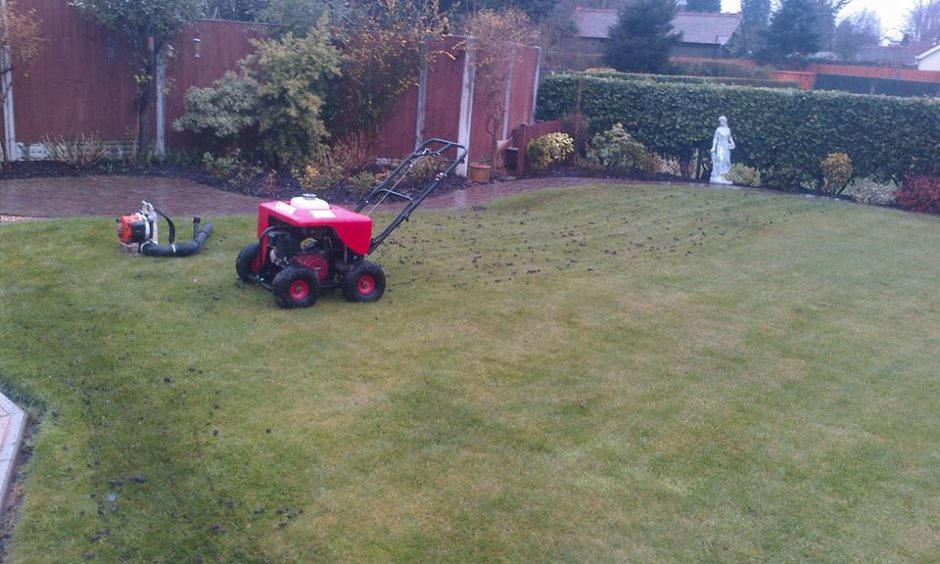LAWNCARE

As with Landscaping, Covid-19 has probably contributed to a better awareness of our garden spaces, and TV gardeners push the ways in which we can improve the many elements which can exist within our back yards.
Lawncare is a service which has enjoyed a great deal of popularity in recent years. In days gone by there were very few people who took much notice of their lawns or grass patch. In many cases, other than being cut at regular or irregular intervals during the summer months, they received little to no treatments at all.
It seems nowadays that the general public is much more likely to want to get the best out of their gardens. And lets face it – nothing shows off the physical features, plants and even our houses as well as a healthy and well presented lawn.
http://www.priestgate.co.uk/blog-and-advice/grass-is-just-grass-right
Many people will have visited tennis courts, golf greens and bowling greens, and stood in wonder at how beautiful they are when you look closely at them. And many will have come away with a ‘New Year’ type of resolution (which they didn’t keep) to improve the quality and general appearance of their lawns.
Whilst many physical, chemical and mineral treatments can change things for the better, it isn’t quite as simple as that.
So before we go any further, lets discuss what it is that makes up what we think of as a typical lawn, and how it will differ from the beautiful turf that we were looking in wonder at on our trip to the local park to watch the bowls. A turf which may only have 2 species of grass in it.
When you buy turf or grass seed for a typical general purpose lawn, it is realistic for you to assume that there could be 4 -6 different types of grasses represented within the resulting lawn. Mostly when you buy seed, you are buying a ‘seed mixture’.
http://www.priestgate.co.uk/blog-and-advice/lawns-created-with-seed
The reasons for this vary from site to site, or should do, and a tailored grass seed mixture is really advisable in any large scheme where you are starting from scratch. That is because individual grass species have differing growing characteristics. Some have broad upright leaves and are quick growing, some have thin leaves, creep along the ground and are slow growing. Some are annuals and some perennials. Some tolerate shade, some don’t. Some tolerate water logging, some don’t. Some put up with drought, some don’t. You can see where I’m going with this ….
Back in the day, and certainly until at least 20 years after the Second World War ended in 1945, if you wanted turf, in many instances it was cut from a Farmer’s field and was called Meadow Turf. And the express purpose of a Meadow is to feed Cattle and Sheep or to produce Hay or Silage (cut meadow grass that is “pickled” in a silo, or these days in black plastic – the liquorice allsorts you see in fields). And to be successful at feeding grazing farm animals it needs to be able to recover quickly and grow back in a matter of a few days. Therefore when you bought Meadow Turf, you also bought yourself a good fitness regime because you may have had to cut your lawn anything up to three times a week in order to keep it presentable – and bear in mind that the average householder back then would not necessarily have been able to afford a petrol lawn mower – cheap electric mowers hadn’t been invented yet, the Flymow didn’t exist – everyone had either a short handled ‘Grass Hook’, or if they were really keen a push cylinder mower, which to be perfectly truthful did a really good job.
So, cut to the turf sellers who have been receiving complaints that their turf grew too quickly and was too much like hard work.
….
It had long been known that grazing sheep bite off the grass very close to the ground, and as such vigorous grasses can’t cope with that kind of treatment for too long. Without the energy gathered by the long leaves they can’t sustain multiple spurts of new growth, only to be eaten off before their leaves are mature enough to be of any use to them. So there is then a tendency for them to die off. The long term effect of this is to encourage the smaller leaved varieties of grasses which, as luck would have it can cope with regular close grazing.
So what the crafty Farmers of that time did was to put sheep on their ‘turf field’ for a couple of weeks so that they could then call the turf ‘Sheep Grazed Turf’, thus implying that the coarse grasses had been eradicated by grazing. And if you’ve ever put the old ‘Sheep Grazed’ Meadow Turf down you will remember the generous quantities of sheep poo that was all over it.
And although I can’t say that this is true, coincidentally the consumer protection Acts started to pop up, and the incidence of Farmer’s Meadow Turf dwindled. Funny that ….
So then the need for the professional cultivation of turf had to be considered for general garden usage. And what the seed merchants did in the first instance was to put together a mixture of grass types that could deal with the majority of influences that the grasses in it were likely to be faced with in the average back garden. One of the grasses had to be a Rye grass, which was the quick growing one, so that an element within the resulting turf could ‘repair’ itself quite quickly. In that way, children playing vigorously on the turf wouldn’t totally ruin it. And thus, Cultivated Amenity Turf was born.
And over the intervening years, the Turf research institutions across the UK in particular have had trials and breeding programmes, and have bred dwarfing varieties of perennial Rye Grass which has been used in Sports Turf Seed mixtures for Football and Rugby pitches across the land for quite some years now. And the result of all of this is that by and large, turf didn’t need cutting so frequently, and these days is far better suited to back gardens than it used to be.
http://www.priestgate.co.uk/blog-and-advice/cutting-grass

When it comes to looking after your lawn, apart from cutting it and considering the use to which you put it, there are a whole variety of actions that can be employed to keep it healthy and active. Some of these will depend on what type of underlying soil you have, some on its usage and some on the current season. Suffice to say that if you are serious about giving your lawn its best chance to thrive, then you will need to do more than get the mower out of the shed.
After all, all a lawn really comprises of is thousands of individual plants in about 4 to 6 species, living very, very closely together, being trampled on by all and sundry, being rained on, snowed on, baked in summer months, with its soil being compacted and without any extra food and with weed seeds blowing in from all over the place competing for the nutrients ….
How difficult could it be ?
….
So given all of these many forms of ‘attack’ and ‘abuse’ that the humble lawn can face, is it any wonder that it could benefit from, feeding, watering, aerating or de-compacting, scarifying, weed control, moss control ?
http://priestgate.co.uk/blog-and-advice/its-not-growing-cause-it-cant-breathe
